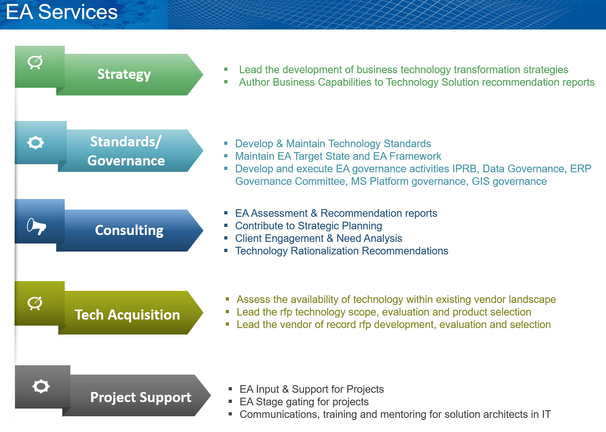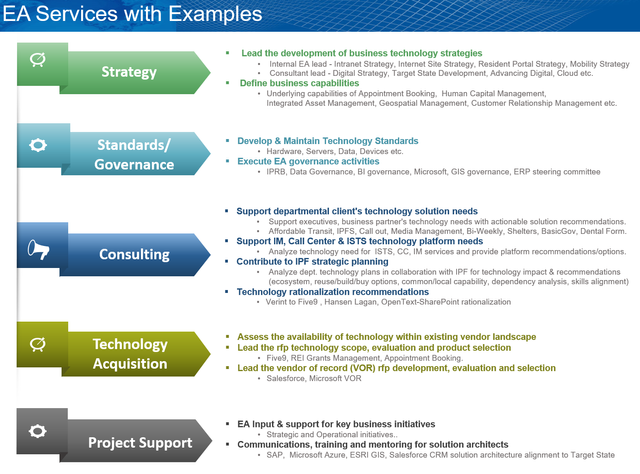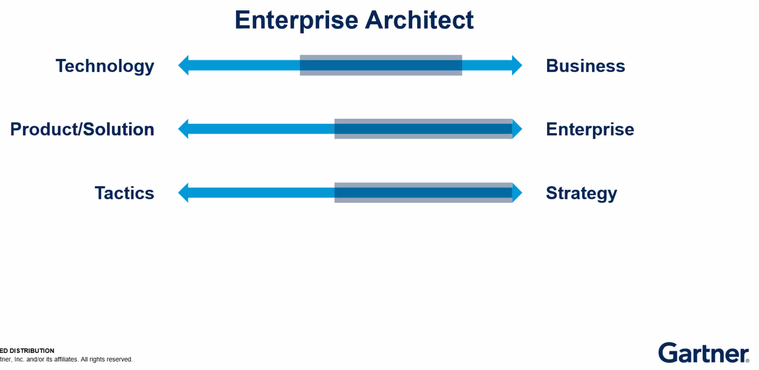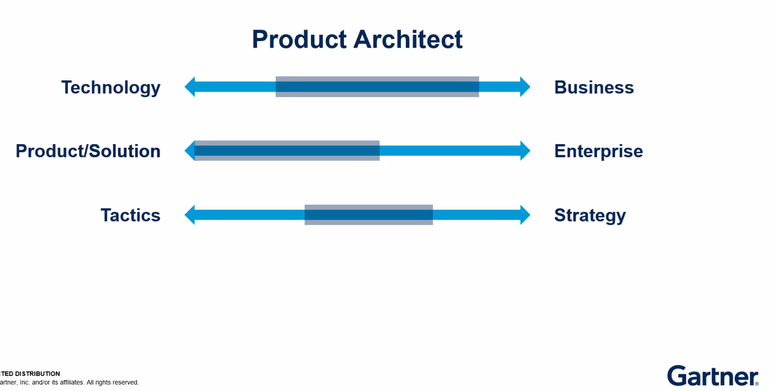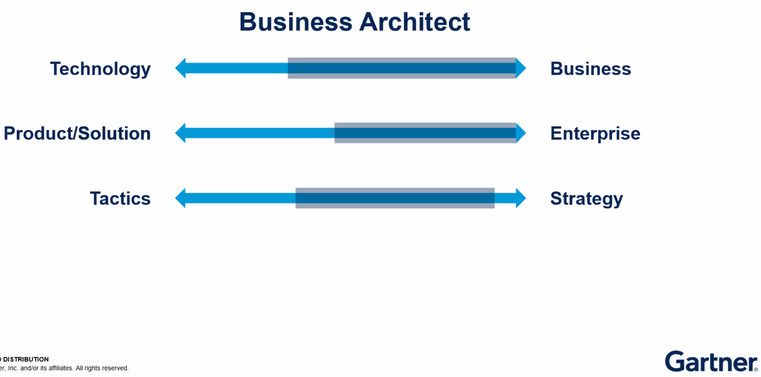- SAP Community
- Groups
- Interest Groups
- Enterprise Architecture
- Discussions
- Re: What are the Skills for Enterprise Architects ...
- Subscribe to RSS Feed
- Mark Topic as New
- Mark Topic as Read
- Float this Topic for Current User
- Bookmark
- Subscribe
- Mute
- Printer Friendly Page
What are the Skills for Enterprise Architects for the Next Decade?
- Mark as New
- Bookmark
- Subscribe
- Mute
- Subscribe to RSS Feed
- Permalink
- Report Inappropriate Content
09-05-2023 2:14 PM
- Mark as New
- Bookmark
- Subscribe
- Mute
- Subscribe to RSS Feed
- Permalink
- Report Inappropriate Content
09-05-2023 3:53 PM
- Mark as New
- Bookmark
- Subscribe
- Mute
- Subscribe to RSS Feed
- Permalink
- Report Inappropriate Content
09-05-2023 8:58 PM
Glad to see sustainability, ESG, and circular economy on the list! I think this includes (or needs to include) the ability to design organizations for sustainability and circularity (e.g., business model design, designing business ecosystems with intent).
- Mark as New
- Bookmark
- Subscribe
- Mute
- Subscribe to RSS Feed
- Permalink
- Report Inappropriate Content
09-06-2023 6:56 AM
- Mark as New
- Bookmark
- Subscribe
- Mute
- Subscribe to RSS Feed
- Permalink
- Report Inappropriate Content
09-06-2023 7:39 AM
Interesting lists, good variety, not sure I agree with all of them, but what it does show is that the role of an EA is complex and diverse at the same time. We will all have different starting points and bring our own experiences as well. Good conversation to have.
SAP Canada
- Mark as New
- Bookmark
- Subscribe
- Mute
- Subscribe to RSS Feed
- Permalink
- Report Inappropriate Content
09-06-2023 8:43 AM
Some suggested tweaks Paul to your great start : In the RISE row (Column 1) we should add GROW also ; in Row 2 Column 1, Digital Supply Chain and Business Process Transformation (Signavio) are missing, in Row 3 under BTP we should call out Data Management/Data Fabric, under the "up and coming topics" we should include Business Composability, Composable ERP a.k.a Component Based Design Principles etc.
- Mark as New
- Bookmark
- Subscribe
- Mute
- Subscribe to RSS Feed
- Permalink
- Report Inappropriate Content
09-06-2023 4:13 PM - edited 09-06-2023 4:18 PM
This is an excellent compilation, Paul—my compliments to the authors.
Enterprise Architects undoubtedly require a broad spectrum of skills. A phrase I often employ when coaching emerging EAs is, "Mile wide and many feet deep." A proficient EA must be fluent in the distinct dialects of both business and IT —spanning roles such as CEO, CFO, CIO, COO, CMO, and Board members. Moreover, they need to stay abreast of novel technological trends and understand how these can be harnessed to digitally transform business models and operations.
For further contemplation, I'd like to propose a few more competencies:
1. **Understanding of Risk** - Grasping Impact and Likelihood-based risk management techniques, especially for presentations tailored for the C-suite and Board, is crucial.
2. **Financial Acumen** - A familiarity with Discounted Cash flow analysis and their incorporation in ROI calculations is beneficial in investment planning,
3. **Corporate Strategy Insight** - It's pivotal to comprehend the overarching environment in which your organization creates value, and the strategies it employs to sustain a competitive edge (like Porter's Five Forces analysis, value chain scrutiny, and distinctions between cost leadership vs. product differentiation).
4. **Portfolio planning** - Ability to work with product and business in crafting portfolios which would help the organization to move toward its Target state model.
Beyond the trends and abilities delineated above, I've crafted a T-shaped Skills/Certification framework for my personal growth. I've attached it for the community's benefit. This domain is indeed subjective, and diverse perspectives are inevitable.
My counsel to any EA is to architect their personalized T-shaped skills blueprint, which resonates with and propels them within their chosen industry vertical.
Regards
Gurpreet
- Mark as New
- Bookmark
- Subscribe
- Mute
- Subscribe to RSS Feed
- Permalink
- Report Inappropriate Content
09-06-2023 4:23 PM - edited 09-06-2023 4:23 PM
I like your way of thinking on this. We all need to work out some practical aspects of being an EA.
SAP Canada
- Mark as New
- Bookmark
- Subscribe
- Mute
- Subscribe to RSS Feed
- Permalink
- Report Inappropriate Content
09-12-2023 3:12 PM
- Mark as New
- Bookmark
- Subscribe
- Mute
- Subscribe to RSS Feed
- Permalink
- Report Inappropriate Content
09-06-2023 4:44 PM
I was reminded in one of the replies to this discussion of a post that I did a month ago of a “PI” shaped Enterprise Architect
Here was the LinkedIb Post
It was awesome to today catchup with Ferose V R for lunch and an indepth tour of the SAP Engineering Academy with Myles Suer. Truly an impressive & inspirational facility led by a brilliant and very human leader.
Every detail at the Academy has been incredibly well thought out to enhance the learning experience of students both SAP Employees and Customers.
The backdrop to this flag photo is “PI” which represents a “Humanist Engineer” as articulated in the book “Artful Design” by GE Wang.
We need to think “PI Shaped” not “T Shaped”.
“THE PI SHAPED PERSON
THE HUMANIST ENGINEER IS AN INDIVIDUAL WHO IS ABLE TO INTEGRATE DEEP ENGINEERING KNOWLEDGE WITH A BROADER HUMANISTIC CONTEXT (AESTHETIC,
MORAL-ETHICAL, PHILOSOPHICAL).
MORE THAN A SPECIALIST, THIS IS SOMEONE WHO IS CAPABLE OF SHAPING THE WORLD FROM NOT ONLY PRACTICAL NEEDS, BUT ALSO FROM THE UNDERLYING VALUE. “ GE WANG
According to GE:
“Our mission remains: to educate/be a kind of Pi-shaped individual — a "humanist engineer".
I am wondering does the same mission holds true for Enterprise Architects in our SAP Community Enterprise Architecture Group?
“Is our mission remains: to educate/be a kind of Pi-shaped individual — a "humanist enterprise architecture"
Thanks as always for the Ferose for your time and our conversation - we are always learning!
- Mark as New
- Bookmark
- Subscribe
- Mute
- Subscribe to RSS Feed
- Permalink
- Report Inappropriate Content
09-06-2023 6:54 PM
Thank you, Paul!
I like the rationale and definition of the PI-shaped individual. The piece that could be articulated further, especially for the EA context, is the following
Many of the EA practitioners start their journey in one specific domain. They then have to work towards becoming a generalist so that in the end they are well rounded and can speak multiple languages like Finance, Risk, Design, Security etc.
- Mark as New
- Bookmark
- Subscribe
- Mute
- Subscribe to RSS Feed
- Permalink
- Report Inappropriate Content
09-12-2023 6:38 AM
Thanks for the insights into the content stack and your thoughts on the "PI Shaped Person" @PaulKurchina .
Ideally I think there would be a sort of synthesis between what you posted, which is a bit more directed towards overarching topics, and the certification driven T-shape @ehsgurp posted in the comments.
PI + T solves for EA.
One thing I have missed so far seems to be the aspects of tools, in particular now that SAP has acquired LeanIX 🙂
Cheers,
Toni
- Mark as New
- Bookmark
- Subscribe
- Mute
- Subscribe to RSS Feed
- Permalink
- Report Inappropriate Content
09-12-2023 2:39 PM
Thanks for sharing! It is a very interesting list and has a lot of vital elements of EA Skills for the next decade. I believe I can only emphasize the importance of a transformational mindset / the multi-disciplinary list. Often we love technology and focus on it but beyond the mere capabilities we can enable with it (and the beautiful architectural discussions around it). We need to understand the transformational character of introducing new capabilities like AI from also the organizational change... it starts with the mindset but also affects the governance (processes) and so many more aspects.
- Mark as New
- Bookmark
- Subscribe
- Mute
- Subscribe to RSS Feed
- Permalink
- Report Inappropriate Content
09-12-2023 3:18 PM
- Mark as New
- Bookmark
- Subscribe
- Mute
- Subscribe to RSS Feed
- Permalink
- Report Inappropriate Content
09-13-2023 11:28 AM - edited 09-13-2023 11:34 AM
Hi Paul, thanks for sharing. I really enjoyed this post and comments from community. This is actually my first reply in this community.
It would be interesting to compare to IBM or to Microsoft or to the AI powerhouses versions of their Content Stack. Such comparisons might indicate that on the Tech side, we can also find IOT, Blockchain, Generative AI (compared to Predictive AI) and ModelOPS.
In the multidisciplinary side, I often find myself augmenting almost all those skills with Generative AI whether on my own or part of new innovations by vendors. SAP announced the Process AI innovation with SAP Signavio, similarly IBM’s latest Generative AI enhanced functionalities of the IBM Garage (IBM equivalent to SAP Activate + SAP appHaus) where , in one area for example, many of the IBM Enterprise Design Thinking tools are now assisted by Generative AI helping to greatly reduce the effort. Below is IBM’s latest roadmap for IBM Garage with Generative AI.
In summary, whether you use SAP or IBM or whatever digital transformation framework or business innovation framework, the use of Generative AI is a multidisciplinary skill set that any human including architects need to master.
- Mark as New
- Bookmark
- Subscribe
- Mute
- Subscribe to RSS Feed
- Permalink
- Report Inappropriate Content
09-13-2023 2:14 PM
Below is Gartner's thinking about different architecture roles and how they vary on different dimensions of product, tech, strategy, and business.
- Mark as New
- Bookmark
- Subscribe
- Mute
- Subscribe to RSS Feed
- Permalink
- Report Inappropriate Content
09-27-2023 2:37 PM



